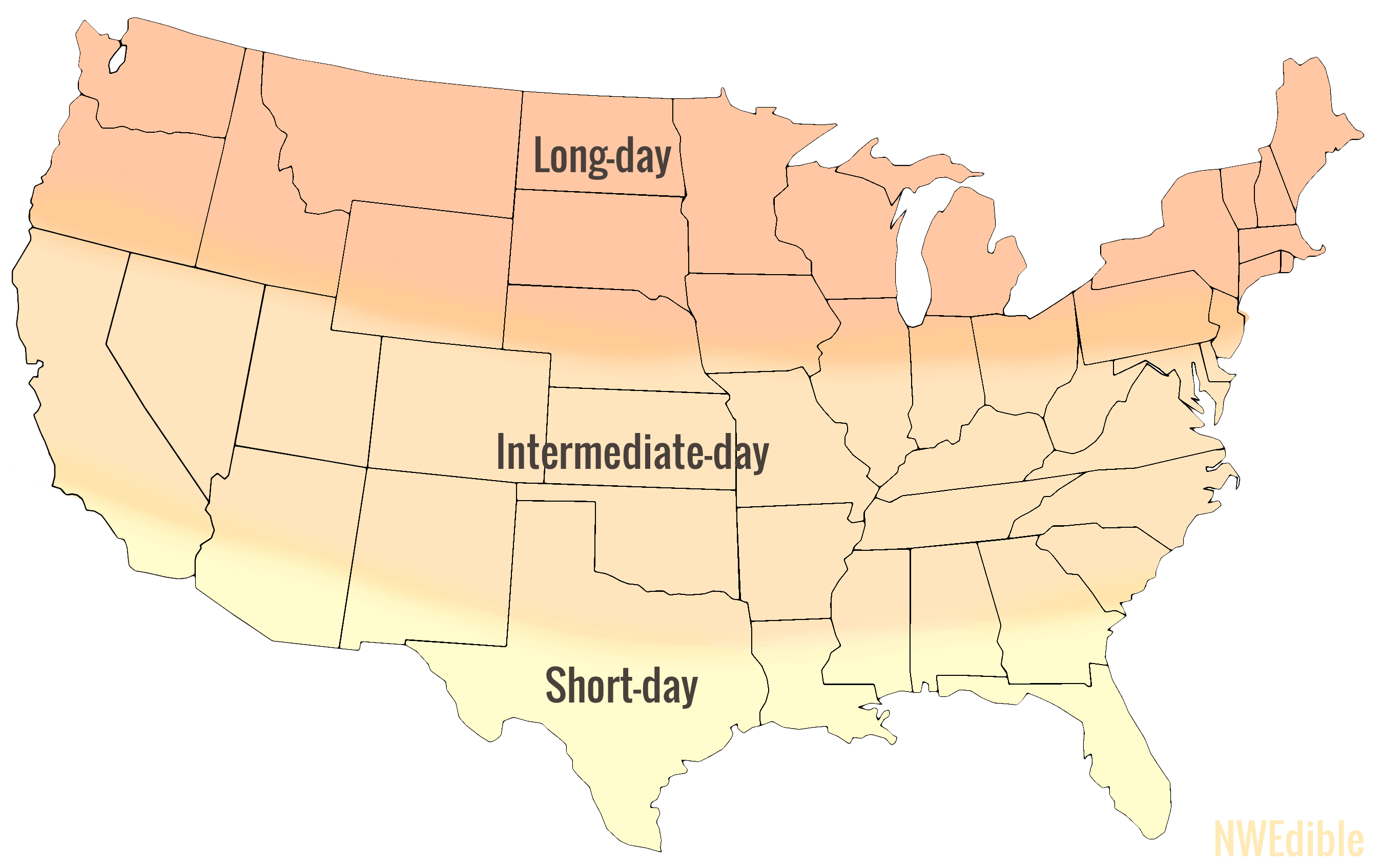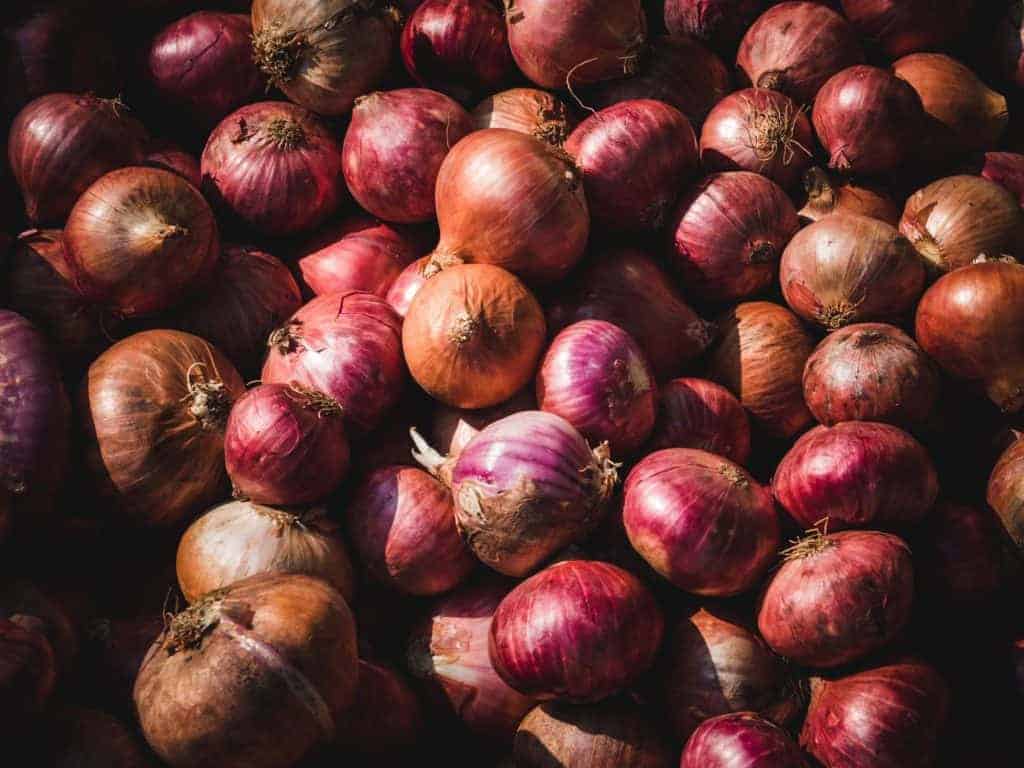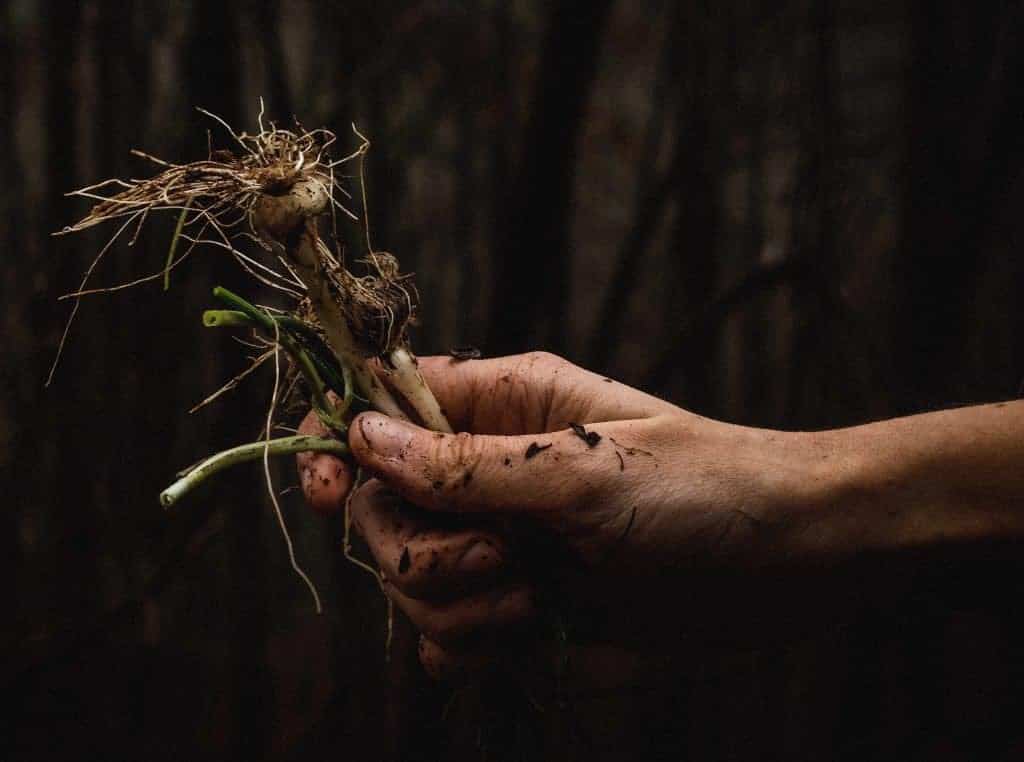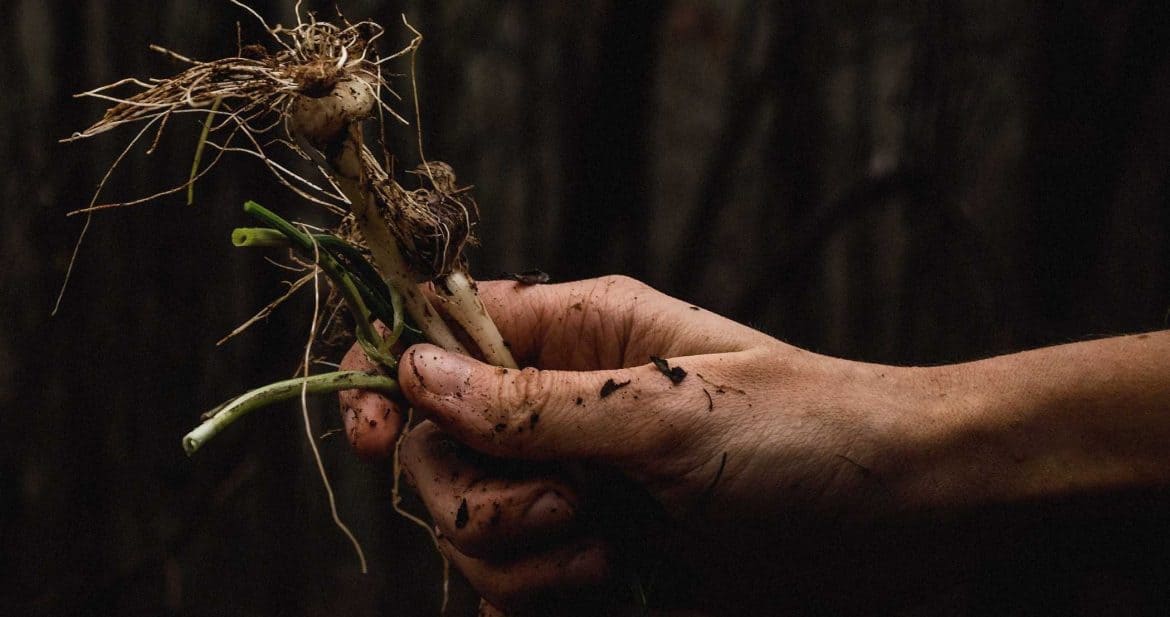Onions are a bit different than most vegetables the casual gardener will encounter. First, they are oddly finicky about daylight length. Second, they can be grown as a fresh eating vegetable or a storage vegetable. Third, there are enough onion varieties to bog down even the most decisive garden planner. Last – but certainly not least in the confusion department – you can grow them from seed, set, or from plant starts.
Let’s try to dispel some confusion and help you decide if onions are the garden crop for you and, if so, how to grow them successfully.
1. Day Length

Onions are classified as long-day, intermediate-day, or short-day.
Near Seattle where I live, at the summer solstice the sun doesn’t set until after 9 pm, and it doesn’t get hard dark until nearly 11. In the summer we have a really, really long day. Folks further north in Canada or Alaska have an even more exaggerated day length in the summer. Us Northerners pay for our summer solar bounty in the winter, when it seems like the sun only shines for a couple hours a day.
Further south, along the Gulf of Mexico or in Southern California, summer days aren’t as long (but winter days aren’t as short).
Onions respond to increasing day-length by bulbing. Different types of onions are triggered to bulb at different lengths of day. Short-day onions begin to bulb when the day length reaches 10 to 12 hours. Intermediate-day onions start bulbing at 12 to 14 hours, and long-day onions wait until day-length reaches 14 to 16 hours before they swell to size.
You have to match the daylight of your latitude at the time of year your onions should be bubing with an appropriate day-length onion variety. If you live in the south and pick a long-day variety, your latitude won’t be able to send your onion plant the message that it’s time to bulb. That means a failed onion crop for you (or very large green onions).
Conversely, if you live in the north, a short-day variety onion won’t have time to grow a mass of nice healthy leaves before it feels compelled to start bulbing. If you’re lucky, you might get very small onions.
Intermediate-day varieties are in the middle, and are ideal for gardeners in the middle latitudes of the U.S., but can typically be grown successfully by most continental U.S. gardeners not at the extreme north or south points of the country.
2. Sweet vs. Storage Onion Types

Onions are bred for varying degrees of pungency, moisture, and skin thickness. These three things in combination plus growing conditions and curing quality account for how well an onion will keep.
Sweet onions, like our famous local Walla Walla Sweets from Washington, or Georgia’s (also famous) Sweet Onions, are absolutely delicious for fresh eating. They are low in pungency, high in sugars, juicy and mild. They are not, however, great keeping onions.
Storage onions like Copra are drier and higher in the sulphurous compounds that give onions their punch. Lower moisture and higher pungency mean longer-keeping potential. A tight, small neck and close, protective skins help keeping onions dry and cure well, and limit the potential for rot in storage.
In addition, all varieties of bulb onions can also be harvested early in their growth to use as spring onions. Spring onions are tender and mild, with a small bulb and tender, scallion-like greens. I often deliberately plant my onions a bit close, and yank every-other-onion before they start to crowd each other. The thinned onions are delicious as spring onions.
3. Selecting an Onion Variety

Selecting a variety is easier once you’ve narrowed it down to varieties that suit your latitude. Within that framework, if your goal is a delicious fresh eating onion you can slice and add to summer barbecue burgers, go with a tender sweet type. If you want something you can cure and tuck away and count on for cooking all winter long, grow a dedicated storage type.
Hot tip! Sweet onions don’t actually make the best sweet, caramelized onions. Plain ol’ yellow onions are best for caramelizing onions like a pro.
The seed catalog or purveyor you are buying from should clearly specify both the day-length and the keeping-quality of their onion options. If they do not – go buy from somebody else. I mean it!
If you are an urban gardener or otherwise short on space, concentrate on growing fresh-eating sweet onions. The flavor difference on a truly fresh, just harvested homegrown sweet onion is up there with snap peas and corn. You’d have to taste it to believe it. Also, there’s a bit of an art and science to properly finishing and curing onions so that they will last as long as possible. If land is limited, outsource this task to your friendly local onion farmer.
If you have the land and the inclination, growing both a sweet variety and a storage crop of onions will pay off for the entire year, and it sure feels like an accomplishment to cook an onion you pulled out of the ground eight months earlier!
Specialty onions like cippolini and non-globe onions are worth considering if you are primarily interested in unique vegetables and flavors. I tried growing cipollini three years in a row and was not overly impressed in the yield-to-effort ratio compared to the globe types I grew.
Up here where I can high-five Canada, I only grow long-day varieties of onion. If any of you more southern readers want to chime in with your favorite sweet and storage varieties of onions in the comments, please do!
I’ve had great luck with the following varieties:
Recommended Long-day Storage Variety Onions
- Copra – The standard in yellow storage onions, these have stored very well in years when I’ve been diligent about about knocking down the tops and curing them well.
- Red Wing – A long-lasting red onion with great color.
Recommended Long-day Sweet Variety Onions
- Walla Walla – The best onion in the entire world, I’ve regularly grown sweet Walla Wallas that hit 2 pounds or more. Eat them first since they aren’t a great keeper.
- Ringmaster – A white Spanish type, I don’t think Ringmaster is quite as delicious as Walla Walla, but it’s mild and sweet and does last a bit longer.
4. Growing from Seed, Set or Plant Start: Decisions, decisions

The gardener has the choice of three “beginnings” for their onion patch. Onions can be grown from seed, like so many other annuals. They can also be planted from sets, which look like tiny cured onion bulbs. They can also be grown from baby onion plants, which look just like small, stocky green onions.
Onions From Seed
- Advantages: cheap and lots of variety.
- Disadvantages: a little fussy and time consuming
Onion seed ages like Mickey Rourke. Which is to say, not very well. Start with current-year, fresh seed. For the most uniform crop of onions, you might want hybrid seed which will help ensure your onion plants bulb at the same time, and reach harvestable size in a fairly narrow window. This makes harvesting and curing more convenient. If you prefer to avoid hybrid seed, make the effort to buy from a seed house that’s doing active work in keeping their open-pollinated lines reliable and consistent.
When we start onion from seed, really we’re growing our own baby onion plants to transplant later.
Start onion seeds very early in the year – in the Maritime Northwest, January isn’t too early. Sow them lightly in a tray filled with potting mix. Something like a take-out food tray that’s about 3-inches deep is absolutely perfect, just poke some drainage holes in there. Make shallow, 1/2-inch deep furrows across your tray, spacing the furrows about 3-inches apart. Aim to sprinkle about 6 onion seeds per inch along the furrows your tray (you know, 6-ish…you’re not transplanting kidneys here), then cover with soil.
Water in your onion seeds gently, and nurture your seedlings under lights or in a greenhouse or protected area until the chive-like sprouts are large enough to transplant out to the garden. If you can get them to the thickness of a straw or pencil, that’s ideal. If the onion plants get too floppy and unmanageable, give the plants a haircut, cutting an inch or so off the leaves. (You can use these trimmings like chives.)
As soon as the weather has warmed enough that you start to see real growth from your spring bulbs – narcissus, tulips, etc. – you can transplant your baby onions out to the garden (see section on onion plant starts for transplant details).
General Info On Seed Starting You Might Like:
Onions From Sets
- Advantages: easy
- Disadvantages: extremely limited variety, occasionally unreliable bulbing or storage qualities
Sets are a common sight in the nursery every spring. They look like tiny, cured onion bulbs, with the papery brown skin and everything. Typically you’ll see them corralled small, plastic mesh bags that allow for good airflow. They might be labelled, “red,” “yellow,” or “white” with no additional varietal information given.
Planting onion sets is as easy as it gets. Wait until your local nursery is selling them, take them home, and shove them root-side down and pointy-side up into damp earth until the pointy bit is just a bit below the soil level. Wait.
For best results, sort through your sets a bit as you plant. Try to plant mostly uniform, regular-size elongated sets. These are most likely to successfully form a nice, globe-shaped onion. Sometimes you’ll get big, oversize jumbo sets. Bigger isn’t always better – and this is one of those cases. Dramatically larger-than-average sets are more likely to bolt instead of sizing up.
Spacing your sets 4-inches apart or a bit more will allow them to grow into nice size bulbs. Plant 2-inches apart or even closer if you want to yank every-other-plant as they grow to use as green or spring onions.
Onions From Plant Starts
- Advantages: easy, reliable
- Disadvantages: expensive, somewhat limited variety
My favorite easy option for a bountiful onion patch is starting with onion plants. Onion plants look like trimmed up, thin green onions. They are the freshly dug onion plants, just like what you would grow from same-year seed, if you had the time and inclination to do so.
Dried slightly to send the plants into dormancy but still very much alive, typically they are sold in bundles of 50 or so onion plants, all of the same variety. Prices generally range from around $10 if you can find conventionally grown bundled plants locally, to around $20 if you order in organic plants from a specialty retailer and pay shipping.
When your onion plants arrive, remove them from the shipping box, seperate them gently, and keep them in a cool, well ventilated place until you can transplant them into your garden. Unless the package instructions tell you otherwise, don’t soak your onion plants or anything.
Plan to transplant your onions promptly once they arrive to you. I’ve gotten distracted around the time my onion plants arrived and neglected to plant them for a few weeks. They will survive such neglect – but that kind of trauma sucks resources from your baby plant that would otherwise go into rapid early-season growth.
Larger onion plants will grow into larger onions. Prioritize planting the thickest, stockist looking plants. To transplant, amend and loosen your soil, then plant the onions about 1-inch deep, just below the point where the white part of the onion changes to green. Firm and water the onion plant in, and give it a gentle little tug to make sure it’s standing up nice and tall in the soil.
As with sets, space your onion plants about 4-inches apart for full size bulbs, or about 2″ apart if you plan to thin and eat the thinning as spring onion. For massive onions (especially if growing large types like Walla Walla) wider spacing is appropriate.
What’s your best tip for growing top quality onions?
194
Here in Colorado I grow Candy hybrid onions. They’re classified as day-neutral, have a nice sweet taste, but also store well. I always grow from starts that I order by mail. Previously, I’ve just grown onions wherever I could find a spot in the garden, in between other plants. But this year I have a dedicated onion and garlic bed, so I’m hoping for even better yields.
Candy sounds tempting! Good luck with your bed!
Hi there-
I am new to gardening. After reading your article, I would like to try and grow the walla wallas. I live in Chicago and was wondering what site you suggest for buying the plant starts. Also, when should I order them… Do I schedule them for later delivery? Also, when should I plant these? Sorry to bug you, but I’ve never done this before.
Thanks,
Heather
Looks like your last frost in the spring in the Chicago area is mid-May. Typically onions from plant starts can be transplanted 4-6 weeks before your last frost, so I’d shoot for getting them in the ground in early April. I like Dixondale for plant starts – they supply some of the major seed catalog places with their onion plants, but buying direct means better pricing. 🙂 Hope this helps!
Interesting note: the luck you’ve had with Copra on the west side of the Cascades matches the success of it over on the east side of the range. Very few vegetable varieties can claim that distinction.
Good to hear! Copra is a great onion. Sometimes standards are that way for a reason. Waltham Butternut is another that grows well almost everywhere.
You remind me of a time my mom was growing Walla Wallas. She sent me out to get 2 onions for spaghetti sauce. I pulled the first one I saw. It was the size of a small child’s head. I brought it inside and said, “Are you SURE you want two?”
In all seriousness, we gave up on onions. We were always successful, but we decided that the cost savings wasn’t enough, and we switched the bed out to strawberries. Locally grown onions are inexpensive around here. Strawberries are not!
We’ve got a couple of Walla Wallas that keep coming back in my Portland, OR garden, and I have some walking/Egyptian onions that grow pretty well. The walking onions aren’t great storage onions, and they tend to grow pretty small in my yard, but they’re consistent and persistent, and they’re a fun plant to explain to visitors. They’re also just about exactly enough for single dishes – when all you want is a little bit of onion. I’m having a heck of a time growing shallots. That’s one I need to work on.
I live on Whidbey Island and grow Copra every year to have all year long. I usually designate three of my 8-10 foot raised beds for this. I like buying the onions grown from seed from my local nursery because I have good luck with them. I also plant the little plants between my rows of garlic. This gives them time to put on a nice green stalk and when the garlic is ready to harvest the onions start bulbing. I aim for 300 onions every year and I have plenty for myself and my adult kids and sharing. Finding room for the drying racks in the garage is my biggest problem and it gets a little messy but very satisfying. The trick here to drying them is to make sure they don’t get dampened with morning dew or fog. So I either pull them into the garage in the evening (the best) or cover them with a tarp over night when left out on the driveway. I also dry them on a 4×6 wood frame covered with hardware cloth. The small ones are braided like garlic and hung up in the garage.
Interesting article on onions. Thank you
M0st of the veggy gardeners I know are guys so the fashion clothing story was ……what.
Another factor to keep in mind about sets is that onions from them usually do not hold as long in storage. You mentioned that they look like a tiny onion with “a papery skin and everything”. That’s because they are already an actual onion. Sets are almost always *already a year old and were intentionally crowded to keep them small*. Since onions are a biennial crop (flowering and making seed the second year), when you plant sets they are trying to make seeds because it’s thier second year. Harvesting and storing them interrupts this process but nature will not be denied and they will typically sprout in storage faster than onions grown from seed or plants.
So if longevity in storage is a thing for you, maybe consider seed/plants.
That being said…yeah, sets are super easy.
And I don’t devote special space to onions; I plant onions zig-zagged amount my brassicas. They help deter cabbage moths.
Good reasoning.
Thanks for the info! I always learn something new from you.
I will never plant sets again. I always had tiny, pink rooted onion which never cured. Since I switched to shoots, my crop has been amazing. I’m definitely trying the copra this year! I’m also trying some from seed too just for experience.
Happy planting.
Copra has been my go-to for about 5 years, but evidently it’s been discontinued by the supplier. One of my local nurseries couldn’t get plants last year; I found tiny baby plants grown out by another local nursery instead. They grew, but were on the small size at harvest. Fedco says Dixondale bought all the remaining seed and this year a couple places (including Fedco) are offering plants via mail order so that’s what I’m doing but they will likely be no more after this year.
the photograph above this story is beautiful